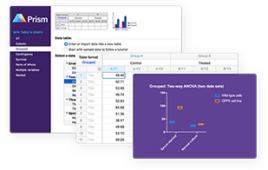 An increase in Twitter sentiment (the positivity or negativity of tweets) is associated with an increase in state-level enrollment in the Affordable Care Act’s (ACA) health insurance marketplaces — a phenomenon that points to use of the social media platform as a real-time gauge of public opinion and provides a way for marketplaces to quickly identify enrollment changes and emerging issues. Although Twitter has been previously used to measure public perception on a range of health topics, this study, led by researchers at the Perelman School of Medicine at the University of Pennsylvania and published online in the Journal of Medical Internet Research, is the first to look at its relationship with the new national health insurance marketplace enrollment.
An increase in Twitter sentiment (the positivity or negativity of tweets) is associated with an increase in state-level enrollment in the Affordable Care Act’s (ACA) health insurance marketplaces — a phenomenon that points to use of the social media platform as a real-time gauge of public opinion and provides a way for marketplaces to quickly identify enrollment changes and emerging issues. Although Twitter has been previously used to measure public perception on a range of health topics, this study, led by researchers at the Perelman School of Medicine at the University of Pennsylvania and published online in the Journal of Medical Internet Research, is the first to look at its relationship with the new national health insurance marketplace enrollment.
The study examined 977,303 ACA and “Obamacare”-related tweets — along with those directed toward the Twitter handle for HealthCare.gov and the 17 state-based marketplace Twitter accounts — in March 2014, then tested a correlation of Twitter sentiment with marketplace enrollment by state. Tweet sentiment was determined using the National Research Council (NRC) sentiment lexicon, which contains more than 54,000 words with corresponding sentiment weights ranging from positive to negative. For example, the word “excellent” has a positive sentiment weight, and is more positive than the word “good,” but the word “awful” is negative. Using this lexicon, researchers found that a .10 increase in the sentiment of tweets was associated with a nine percent increase in health insurance marketplace enrollment at the state level. While a .10 increase may seem small, these numbers indicate a significant correlation between Twitter sentiment and enrollment based on a continuum of sentiment scores that were examined over a million tweets.
“The correlation between Twitter sentiment and the number of eligible individuals who enrolled in a marketplace plan highlights the potential for Twitter to be a real-time monitoring strategy for future enrollment periods,” said first author Charlene A. Wong, MD, a Robert Wood Johnson Foundation Clinical Scholar and Fellow in Penn’s Leonard Davis Institute of Health Economics. “This would be especially valuable for quickly identifying emerging issues and making adjustments, instead of having to wait weeks or months for that information to be released in enrollment reports, for example.”
The researchers collected a random sample of 977,303 tweets from March 2014 to use as a control group for comparison of sentiment. They also further validated the NRC lexicon by randomly sampling 300 of the tweets and having human raters score them, finding a significant correlation between the computer and human ratings.
“Twitter is a powerful tool when it comes to examining trends in health and health policy,” said senior author Raina M. Merchant, MD, MSHP, director of the Penn Social Media and Health Innovation Lab and assistant professor of Emergency Medicine. “We can see this methodology being used to improve health care in real-time as health policy is implemented, in order to stay on top of any issues and adjust accordingly.”




